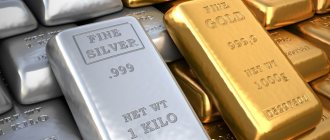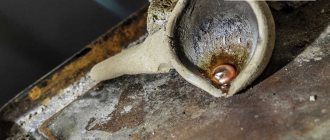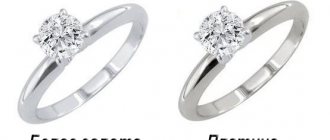The former head of the US Federal Reserve System, Ben Bernanke, explains the high value of gold by established historical traditions. Is it so?
What makes millions of people voluntarily exchange their existing funds for precious metals? After all, it does not bring any monthly dividends, it cannot be eaten or burned in a stove to keep warm. However, it is such a valuable asset that one ounce of it, the size of a lump of sugar we put in our tea, is worth about $1,700 today. So why is the yellow metal so attractive and continues to form the basis of the financial and monetary system of the whole world for thousands of years?
There are five reasonable explanations for the fact that gold is so valuable now, and will be an even more valuable asset in the future, which we will give below.
Physico-chemical explanation of the value of gold
What makes gold a valuable asset is, first of all, its physical and chemical characteristics. It is they who transform this metal into the optimal material for use as money. In ancient times, trade transactions were concluded on the basis of natural exchange. With the development of civilization and the emergence of large cities, the need arose to introduce into use a universal equivalent of the standard value of a product, that is, money.
Anything can be used as a currency. But some items may be too inconvenient, bulky, difficult to store, or simply unsightly to look at. Gold is free from all these disadvantages. Therefore, over time, it became that very valuable asset that turned into money.
Let us compare gold with other metals in terms of physical, chemical and other properties. Here are the main differences that determine its high value:
- The industrial use of gold is minimal compared to silver.
- Gold metal has electrical conductivity comparable to copper, but is much rarer and harder.
- Compared to palladium and platinum, which are used today in fuel catalysts to reduce harmful emissions from cars, gold, on the contrary, is more abundant in nature.
Humanity's choice in favor of gold, as money and the most valuable asset, from a chemical point of view is explained by the fact that, unlike other metals, it cannot be destroyed. It does not rust either in water or in air. Can be preserved as minted coins for thousands of years, and the details of the design will be just as recognizable. This metal burns in fire and melts only at a temperature of 1064 ºC, which is difficult to achieve in everyday life.
Unlike livestock, gold does not need to be fed. It does not require fertilizers and watering, like plants, and maintenance and repair, like complex equipment.
In terms of its metallic properties, gold is valuable due to its high malleability and flexibility. It is difficult to break, stretch or tear. In addition, its value lies in its rarity and beauty. Indeed, the entire volume of yellow metal mined throughout history can easily fit into two swimming pools. And its beauty is evidenced by the huge number of jewelry that bring aesthetic pleasure to their owners.
The above arguments regarding gold as a valuable asset are difficult to classify as traditions or prejudices. They are based on a scientific approach and common sense. Gold metal is also ideal for use as money, as plutonium is for nuclear bombs, steel is for railroad rails, and copper is for wires. No one will run trains on soft copper rails or make conductors for electronic boards from plutonium. Each substance has its own value and finds its unique application according to its properties.
Amazing properties of gold
The nature of gold is unique, as is every piece of jewelry created from it. These interesting facts will help you show off your knowledge and once again make sure that any owner of gold jewelry is a real lucky one!











